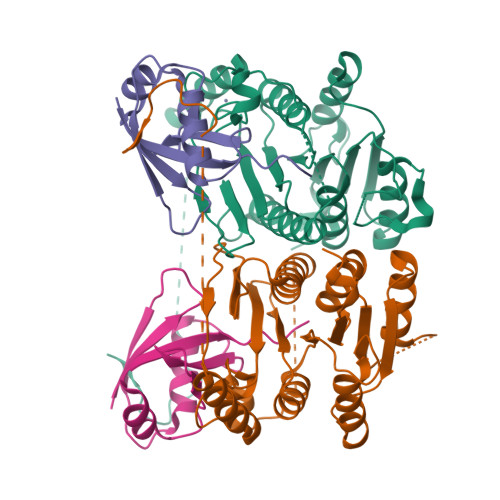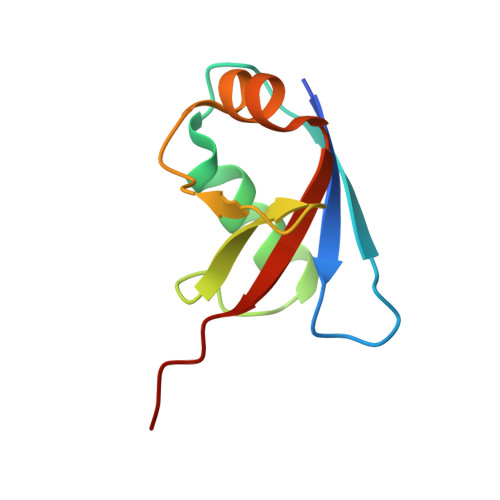Trans-Binding Mechanism of Ubiquitin-like Protein Activation Revealed by a UBA5-UFM1 Complex.
Oweis, W., Padala, P., Hassouna, F., Cohen-Kfir, E., Gibbs, D.R., Todd, E.A., Berndsen, C.E., Wiener, R.(2016) Cell Rep 16: 3113-3120
- PubMed: 27653677
- DOI: https://doi.org/10.1016/j.celrep.2016.08.067
- Primary Citation of Related Structures:
5IAA, 5L95 - PubMed Abstract:
Modification of proteins by ubiquitin or ubiquitin-like proteins (UBLs) is a critical cellular process implicated in a variety of cellular states and outcomes. A prerequisite for target protein modification by a UBL is the activation of the latter by activating enzymes (E1s). Here, we present the crystal structure of the non-canonical homodimeric E1, UBA5, in complex with its cognate UBL, UFM1, and supporting biochemical experiments. We find that UBA5 binds to UFM1 via a trans-binding mechanism in which UFM1 interacts with distinct sites in both subunits of the UBA5 dimer. This binding mechanism requires a region C-terminal to the adenylation domain that brings UFM1 to the active site of the adjacent UBA5 subunit. We also find that transfer of UFM1 from UBA5 to the E2, UFC1, occurs via a trans mechanism, thereby requiring a homodimer of UBA5. These findings explicitly elucidate the role of UBA5 dimerization in UFM1 activation.
Organizational Affiliation:
Department of Biochemistry and Molecular Biology, Institute for Medical Research Israel-Canada, Hebrew University-Hadassah Medical School, Jerusalem 91120, Israel.




















